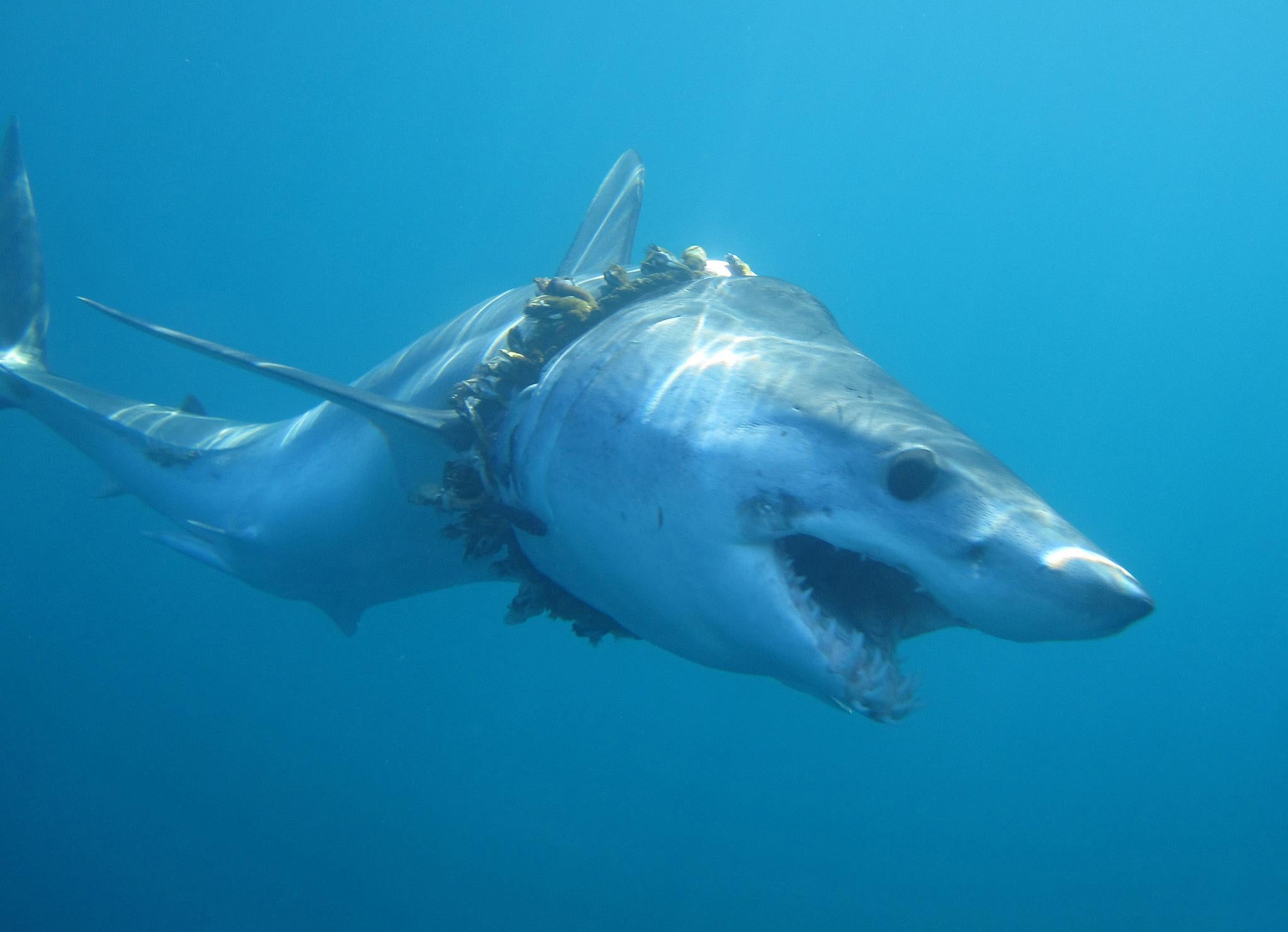Hundreds of sharks and rays tangled in plastic waste, research shows
True figure expected to be much higher, scientists warn

Your support helps us to tell the story
From reproductive rights to climate change to Big Tech, The Independent is on the ground when the story is developing. Whether it's investigating the financials of Elon Musk's pro-Trump PAC or producing our latest documentary, 'The A Word', which shines a light on the American women fighting for reproductive rights, we know how important it is to parse out the facts from the messaging.
At such a critical moment in US history, we need reporters on the ground. Your donation allows us to keep sending journalists to speak to both sides of the story.
The Independent is trusted by Americans across the entire political spectrum. And unlike many other quality news outlets, we choose not to lock Americans out of our reporting and analysis with paywalls. We believe quality journalism should be available to everyone, paid for by those who can afford it.
Your support makes all the difference.Hundreds of sharks and rays are dying after getting tangled in drifting “ghost nets” and plastic waste, according to new research.
However, scientists have warned that the true number could be far higher.
Entanglement, mostly involving lost or discarded fishing gear, is a “far lesser threat” to sharks and rays than commercial fishing, but the suffering it causes is a major animal welfare concern, the study by a research team from the University of Exeter said.
The scientists scoured existing published studies and Twitter for shark and ray entanglements.
They found reports of more than 1,000 incidents, but warned few studies have focussed on plastic entanglement among shark and rays, indicating the real number of entanglements could be significantly larger.
“One example in the study is a shortfin mako shark with fishing rope wrapped tightly around it,” said Kristian Parton, of the university’s Centre for Ecology and Conservation. “The shark had clearly continued growing after becoming entangled, so the rope – which was covered in barnacles – had dug into its skin and damaged its spine.”
She added: “Although we don’t think entanglement is a major threat to the future of sharks and rays, it’s important to understand the range of threats facing these species, which are among the most threatened in the oceans. Additionally, there’s a real animal welfare issue because entanglements can cause pain, suffering and even death.”
Her co-author, Professor Brendan Godley, who co-ordinates the university’s marine strategy, said: “Due to the threats of direct over-fishing of sharks and rays, and ‘bycatch’ (accidental catching while fishing for other species), the issue of entanglement has perhaps gone a little under the radar. We set out to remedy this. Our study was the first to use Twitter to gather such data, and our results from the social media site revealed entanglements of species – and in places – not recorded in the academic papers.”
The review of academic papers found reports of 557 sharks and rays entangled in plastic, spanning 34 species in oceans including the Atlantic, Pacific and Indian. Almost 60 per cent of these animals were either lesser spotted dogfish, spotted ratfish or spiny dogfish.
On Twitter, the researchers found 74 entanglement reports involving 559 individual sharks and rays from 26 species including whale sharks, great whites, tiger sharks and basking sharks.
Both data sources suggested “ghost” fishing gear (nets, lines and other equipment lost or abandoned) were by far the most common entangling objects. Other items included strapping bands used in packaging, polythene bags and rubber tyres.
The study identified factors which appear to put certain species more at risk:
-
Habitat – sharks and rays in the open ocean appear more likely to get entangled, as do those living on the sea floor, where materials such as nets loaded with dead fish sink and attract predators, which in turn get stuck.
-
Migration – species that cover long distances appear at more at risk of encountering plastic waste.
-
Body shape – sharks seem to be at greater risk than rays. Species with unusual features – such as manta rays, basking sharks and sawfish – are also at more risk.
The study says more research is needed, and the researchers have worked with the Shark Trust to create an online report form to gather data on entanglements.
Overall more than 100 million sharks are estimated to be killed each year by commercial fishing alone, with the true number estimated to be even higher – according to a 2013 estimate 230 million could be killed each year.
In 2018 just 4 people were killed by sharks worldwide according to the International Shark Attack File.
The paper is published in the journal Endangered Species Research
Join our commenting forum
Join thought-provoking conversations, follow other Independent readers and see their replies
Comments